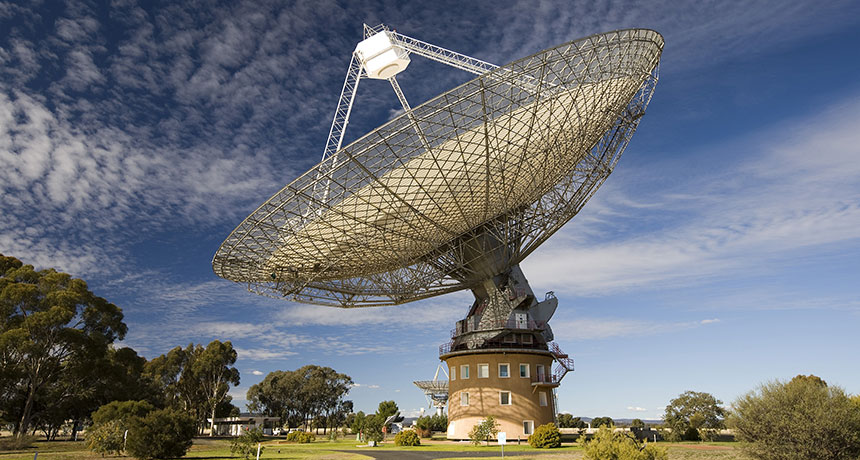More mysterious extragalactic signals detected
A never-before-seen twin fast radio burst may help narrow the search for the source

CAUGHT IN THE ACT Five more fast radio bursts have been detected at the Parkes radio telescope in Australia, shown here.